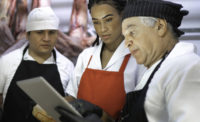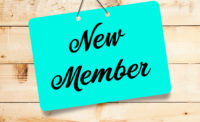Cordray's Column
Communication — A key to success

Often when I am speaking to a group I will say; “The biggest challenge we all face in both our personal and professional lives is communication.” Think about it. How often do you have issues with family, friends or at work, and the cause of the problem was poor communication. It is not at all uncommon.
There are three main types of communication: Verbal, nonverbal, and written or visual communication. I am going to discuss the first two types of communication in this article.
Verbal communication
Effective communication is a key interpersonal skill. Learning how to improve your oral communication has many benefits. Interpersonal is defined as relating to relationships or communication between people. Interpersonal skills are the skills used to properly interact with others. In the business world the term refers to an employee’s ability to get along with others while getting the work done. Good interpersonal skills are a prerequisite for a good manager.
Oral communication is a two way process. Improving oral communication involves both how we send and how we receive messages. Thoughts, feelings and ideas must be clearly articulated and shared to achieve mutual understanding. All this seems simple; speak, be heard, and be understood. However, ensuring that understanding is achieved is actually an art. Following are four steps to achieve productive and meaningful oral communication.
1. Identify the Desired Outcome
Be clear on the message you wish to convey and what you are trying to achieve. Make sure you understand the outcome you want. Stick to the point, as fewer words mean less chance for misunderstanding.
2. Consider Your Tone
The tone in which your deliver a message is very important. A harsh verbal tone will undermine a positive message. A cheery tone can take away the seriousness of a disciplinary message.
3. Identify Potential Barriers
A barrier in oral communication is anything that can potentially interfere with the accurate delivery of a message. Potential barriers include; stress, defensiveness, past interactions, environmental distractions, timing of the conversation and information overload. You should think ahead about potential barriers that might stand in the way of relaying your message clearly and accurately and make an effort to avoid or minimize them.
4. Check for Understanding
Look for nonverbal clues in communication such as nodding, facial expressions and body language. If appropriate, ask the listener to paraphrase what you have said. Address inconsistencies or misunderstandings immediately. Listening is an important part of communication. Listen without interrupting. Finding out how your message impacts the other person can help you improve for the future and clear up any misunderstandings at the time.
Nonverbal communication
A majority of what you communicate to people on a daily basis is done without words. Nonverbal communication is anything besides words, such as gestures, facial expressions, appearance and body language which when seen communicates something. Think of the phrase “it is not what you say but how you say it” or the saying “actions speak louder than words.” People send, receive and interpret nonverbal messages the same way they do oral communication. Because nonverbal communication is often without consideration, inconsistencies between oral and nonverbal communication can occur. It is important to ensure consistency between your oral communication and you nonverbal communications.
Remember: Effective communication is when the person you are talking to actively listens, absorbs your information and understands it
Looking for a reprint of this article?
From high-res PDFs to custom plaques, order your copy today!






